Terms Used in Business Continuity Management Versus Crisis Management
In today’s fast-paced and interconnected business environment, organisations face various potential disruptions, including natural disasters, cyberattacks, supply chain failures, and reputational crises.
Businesses must adopt robust strategies to ensure continuity and resilience, thereby navigating these challenges effectively.
While CM and BCM share the common goal of organisational resilience, they differ in scope and execution.
 Crisis Management focuses on immediate response, decision-making, and leadership during a disruptive event. It involves crisis communication, stakeholder coordination, and strategic decision-making to protect lives, assets, and reputation.
Crisis Management focuses on immediate response, decision-making, and leadership during a disruptive event. It involves crisis communication, stakeholder coordination, and strategic decision-making to protect lives, assets, and reputation. Business Continuity Management ensures the continuity of critical operations and services in the event of a crisis or disruption. It involves business impact analysis, business continuity management (BCM) strategies, and BCM Planning.
Business Continuity Management ensures the continuity of critical operations and services in the event of a crisis or disruption. It involves business impact analysis, business continuity management (BCM) strategies, and BCM Planning.
Business Continuity Management (BCM) and Crisis Management (CM) are two critical disciplines that help organisations prepare for, respond to, and recover from disruptions. While these fields share some common goals and terminology, their focus, scope, and application differ.
Definitions and Purpose
|
Discipline |
Definition (from BCMpedia) |
Purpose at Organisational Level |
|
Crisis Management (CM) |
The overall coordination of an organisation's response to a crisis, in an effective, timely manner, to avoid or minimise damage to the organisation's profitability, reputation, or ability to operate. |
To manage high-impact events that threaten strategic objectives, leadership stability, brand reputation, or regulatory standing. |
|
Business Continuity Management (BCM) |
A holistic management process that identifies potential threats to an organisation and the impacts to business operations that those threats, if realised, might cause. It provides a framework for building resilience and the capability for an effective response. |
To ensure the continued delivery of key products and services in the face of operational disruptions, particularly at the process and system level. |
This chapter explores the key terms and concepts used in BCM and CM, highlighting their similarities and differences. By understanding these distinctions, organisations can better align their strategies to build resilience, protect stakeholders, and ensure long-term success in the face of adversity.
Crisis Scenario vs Disaster
|
Term |
Definition (from BCMpedia) |
Handled by |
Context for Organisation |
|
Crisis Scenario |
An event or situation that poses a critical threat to an organisation's operations, reputation, stakeholders, or viability, and which requires immediate, strategic-level attention. |
Crisis Management |
Examples Include Regulatory breaches, erosion of public trust, cyberattacks on core banking systems, social media backlash, or executive misconduct. |
|
Disaster |
A sudden, unplanned catastrophic event that causes significant damage or loss to an organisation's operations or physical infrastructure. |
Business Continuity Management |
Examples: Data centre fire, flood affecting the physical office, or widespread system outage due to hardware failure. |
Key Differences Between Crisis Scenario and Disaster
Aspect |
Crisis Scenario |
Disaster |
|
Methodology |
Crisis Management |
Business Continuity Management |
|
Nature |
A developing or immediate threat requiring rapid response. |
A large-scale, destructive event causes significant damage. |
|
Impact |
It can affect reputation, operations, or safety without causing physical damage. |
Causes severe operational disruptions and physical damage. |
|
Response Approach |
Managed through crisis response strategies, often requiring coordination with stakeholders. |
Managed through business continuity and disaster recovery plans. |
|
Duration |
Typically, it is a short-term issue that can escalate if not managed properly. |
Often long-term, requiring extensive recovery efforts. |
Comparison and Differences
-
Risk Assessment vs. Crisis Scenario Risk Assessment
- Risk Assessment: Identifies and evaluates risks to business operations.
-
Crisis Scenario Risk Assessment: Focuses on assessing the impact and severity of a crisis.
-
Recovery Time Objective (RTO) vs. Crisis Recovery
-
RTO: A specific time target for restoring business operations.
-
Crisis Recovery: The broader process of returning to normal operations after a crisis.
-
-
BCM Plan vs. Crisis Management Plan
-
BCM Plan: Focuses on maintaining business operations during and after a disruption.
-
CM Plan: This plan focuses on managing and responding to a crisis, which may include broader organisational and reputational concerns.
-
-
Crisis Communication Plan vs. Crisis Communication:
-
Crisis Communication Plan: A documented strategy for managing communication during a disruption.
-
Crisis Communication: The actual process of communicating with stakeholders during a crisis.
-
-
Incident Management vs. Incident Response:
-
Incident Management: Manages and resolves incidents that could disrupt business operations and processes.
-
Incident Response: Immediate actions taken to manage and mitigate the impact of a crisis.
-
-
Resilience vs. Crisis Leadership:
-
Resilience: The ability of an organisation to adapt to disruptions and continue operations.
-
Crisis Leadership: The role of leaders in managing and guiding an organisation through a crisis.
-
-
Business Continuity Management System (BCMS) vs. Crisis Management System (CMS):
-
BCMS: A holistic management system (ISO22301) for business continuity.
-
CMS: A holistic management system (ISO22361) for managing and responding to crises.
-
-
CM Team vs. BCM Team:
-
CM Team: Focuses on managing and responding to a crisis.
-
BCM Team: Focuses on maintaining business operations during and after a disruption.
-
Summary of Comparison: CM vs BCM
|
Aspect |
Crisis Management (CM) |
Business Continuity Management (BCM) |
|
Focus |
Strategic, organisational-level response to crises |
Operational-level response to disruptions |
|
Activation Criteria |
Unpredictable, complex, and ambiguous situations with reputational, legal, or strategic implications |
Planned response to known disruptions and process failures |
|
Leadership |
Led by the Crisis Management (CM) Team under the Board’s direction |
Led by the Business Continuity Management (BCM) Team , coordinated by functional heads |
|
Typical Outputs |
Crisis communications, stakeholder engagement, and strategic decisions |
Business continuity plans, recovery procedures, and alternate site activation |
|
Examples |
Sudden regulatory enforcement action; CEO resignation due to scandal; systemic fraud exposure |
Core banking platform failure, network connectivity loss, and temporary unavailability of customer service |
Integration and Collaboration
While CM and BCM differ in scope and function, integration is essential. It ensures:
- BCM provides operational resilience, forming the foundation for service continuity.
- CM manages uncertainty by dealing with situations that have no predefined playbook.
- Both systems intersect during high-impact events, such as a cybersecurity breach, where BCM activates the incident response for containment, and CM handles public communication and regulatory engagement.
Summing Up ...
Business Continuity Management (BCM) and Crisis Management (CM) share some common elements but have distinct focuses.
BCM is primarily concerned with maintaining business operations during and after disruptions, emphasising planning, risk assessment, and recovery objectives.
Conversely, CM is more focused on managing and responding to crises, which may include broader organisational, reputational, and emergency response considerations. Both disciplines are essential for organisational resilience, but address different aspects of managing disruptions and crises.
Business Continuity Management and Crisis Management are complementary disciplines that play vital roles in safeguarding organisations from disruptions and crises.
While BCM focuses on maintaining operational continuity through planning, risk assessment, and recovery strategies, CM emphasises the immediate response, leadership, and communication required to manage crises effectively.
Understanding each discipline's unique terminology and approaches can help organisations develop integrated strategies that address operational resilience and crisis response.
Ultimately, the synergy between BCM and CM enables organisations to navigate uncertainty, protect their stakeholders, and emerge stronger from disruptions.
Investing in both disciplines will remain essential for building a resilient and adaptive organisation as the business landscape evolves.
More Information About Crisis Management Blended/ Hybrid Learning Courses
To learn more about the course and schedule, click the buttons below for the CM-300 Crisis Management Implementer [CM-3] and the CM-5000 Crisis Management Expert Implementer [CM-5].










![[BL-CM] [5] Register](https://no-cache.hubspot.com/cta/default/3893111/82024308-16f4-4491-98be-818a882c6286.png)

![Email to Sales Team [BCM Institute]](https://no-cache.hubspot.com/cta/default/3893111/3c53daeb-2836-4843-b0e0-645baee2ab9e.png)




![[BCM] Disclaimers and Usage of eBook](https://3893111.fs1.hubspotusercontent-na1.net/hubfs/3893111/Disclaimer%20and%20Proper%20Usage%20Morepost/IC_BCM_Legal%20Disclaimer.png)
![[BCM] [CM] [Vs] Business Continuity Management Versus Crisis Management: Terminologies Used](https://3893111.fs1.hubspotusercontent-na1.net/hubfs/3893111/Operational%20Resilience%20OR/Operational%20Resilience%20Morepost/OR%20Concept%20Morepost/IC_OR_Related%20Concepts_Operational%20Disruption%20vs%20Threats%20and%20Crisis%20Scenarios.png)

![[BCM] [Planning Methodology] Introduction to BCM Planning Methodology](https://3893111.fs1.hubspotusercontent-na1.net/hubfs/3893111/BCM%20Ebook%20Implementation%20Guide%20Morepost/IC_BCM%20Morepost%20ebook_Introduction%20to%20BCM%20Planning%20Methodology.jpg)
![[BCM] [Planning Methodology] Project Management Phase for Business Continuity Management Planning Methodology](https://3893111.fs1.hubspotusercontent-na1.net/hubfs/3893111/BCM%20Ebook%20Implementation%20Guide%20Morepost/IC_BCM%20Implementation%20Guide_Project%20Management.png)
![[BCM] [Planning Methodology] Risk Analysis and Review Phase for Business Continuity Management Planning Methodology](https://3893111.fs1.hubspotusercontent-na1.net/hubfs/3893111/BCM%20Ebook%20Implementation%20Guide%20Morepost/IC_BCM%20Implementation%20Guide_Risk%20Analysis%20and%20Review.png)
![[BCM] [Planning Methodology] Business Impact Analysis Phase for Business Continuity Management Planning Methodology](https://3893111.fs1.hubspotusercontent-na1.net/hubfs/3893111/BCM%20Ebook%20Implementation%20Guide%20Morepost/IC_BCM%20Implementation%20Guide_Business%20Impact%20Analysis.png)

